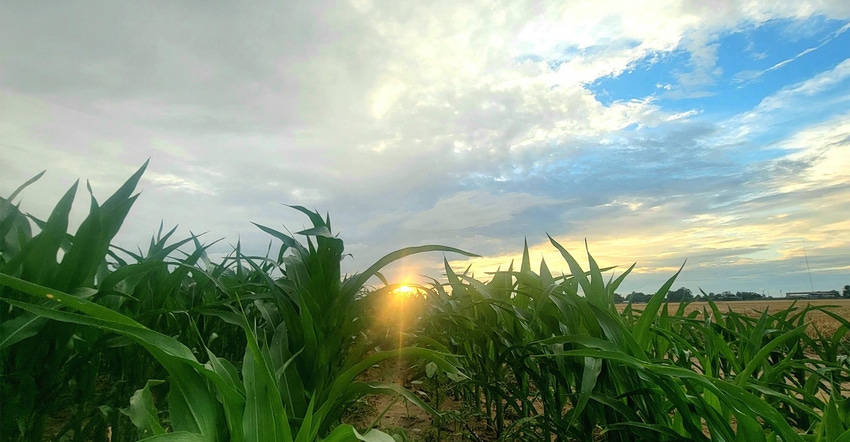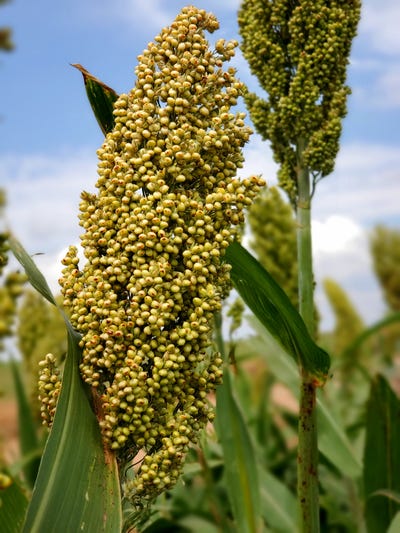
An unsettled weather pattern, in addition to upward pressure on corn prices from the 2020 short U.S. corn crop, combine to create what could be the tightest market since the 2012 drought.
“We see no resolution in tightening corn stocks in this growing season, so far,” says Texas AgriLife Extension Economist and Grain Marketing Specialist Mark Welch.
Welch says conventional wisdom would indicate the likelihood of increased planting following a short crop and tighter stocks, but the last USDA 2021 planting intentions report indicated about the same planted acreage as 2020. “I think we will see an increase,” he said.
On top of the acreage report, Welch says yield concerns also affect the corn market, “especially in the Northern part of the Corn Belt.”
He says planting season was dry. “They have no moisture reservoir, as is normal for that part of the country.” Crop conditions, he adds, are not where they should be “just as corn starts silking.”
Weather market
Welch says markets are reacting to daily weather forecasts. “Will it rain, will it cool off, with it be dry?”
He says some of the questions may be answered in the next crop report. “But if we don’t see a trend away from lower yields, the market could react to a tighter stocks outlook. We could see higher prices.” Or, if crop prospects look better or if demand decreases, prices could ease up, he says.
“And that’s just the U.S. situation. Brazil, our primary export competitor, is still dry. Markets just reacted to some freeze damage in Brazil’s already drought-stressed second crop.”
For now, Welch sees a “weather market in corn, more volatile than normal. We need more pieces of the puzzle to understand what this crop will do. Now, markets may sell hard on Friday and cut back on Monday.”
Grain sorghum
The grain sorghum market, Welch says, remains strong but could see some of the “premium basis” begin to ease back a bit.
 (Photo by Shelley E. Huguley)
(Photo by Shelley E. Huguley)
Grain sorghum prices generally follow the corn market, Welch says, but export demand, mostly from China, gives grain sorghum an edge.
As harvest progresses from the Rio Grande Valley into Central Texas, the basis might slip. “We could begin to see the basis dip a little. It will still be high because demand is good, especially from China.”
He says grain sorghum crop conditions appear to be much better than corn. “Grain sorghum is in good shape. Conditions from early April in the Southern High Plains— Nebraska, Kansas and down to the Rio Grande Valley—indicate some of the best grain sorghum ratings in the last four years. That’s significantly different than conditions to the north.”
Sorghum acreage up
He says the prospective planting report indicated an increase in grain sorghum acreage, “but not as much as I expected. I think it will be higher.”
That promising crop outlook, Welch says, could take a little away from the positive basis grain sorghum has enjoyed. “But prices will still be high, and basis will remain above average.”
For now, Welch says, corn markets will remain volatile until the weather picture clears up and grain sorghum prices will be solid.
Market strategy
Oklahoma State University Economist Kim Anderson says he does not watch corn and milo markets as closely as he does wheat but can recommend a similar marketing strategy with current good prices.
“I would recommend selling when producers need the cash flow,” Anderson says. He also recommends selling in fourths, 25% at harvest, 25% in December or January, 25% around March and the remainder around June or July. “For wheat, it’s a definite sell at harvest.”
He says the corn market has changed over the last ten years with Brazil, Argentina, and Ukraine accounting for more than 50 percent of corn exports. “Southern Hemisphere and Northern Hemisphere harvest now occurs almost year-round. That’s why prices often have been flat.”
Not a guessing game
Anderson says producers should not try to outguess the market. “No one can predict prices. They can look at seasonal trends based on location and get an idea. Central Oklahoma sorghum price is higher than the Panhandle price, for instance. In Oklahoma, most growers sell grain sorghum at harvest. They don’t store much. They also can forward contract.”
Anderson recommends producers “take the emotion out of marketing. He recommends:
Have a written plan;
Have the discipline to follow that plan;
Keep a few bushels to gamble with;
Concentrate on producing a product the market wants and price will take care of itself;
Rarely will you sell at the top or the bottom of the market;
“Use” the market because you are not going to “beat’ the market.
Oklahoma is the sixth largest sorghum producing state with about 3.1% of U.S. production, Anderson says. Kansa is first with about 60% of U.S. production. Texas is second.
He says the grain sorghum market should remain relatively strong as long as China stays in.
“China is a good market. They use grain sorghum for livestock, in an alcoholic beverage, and as a food grain. As that demand continues, the grain sorghum basis should stay above corn; traditionally it’s below.”
Producing a quality product and following a sound marketing plan should help producers take advantage of good grain markets.
About the Author(s)
You May Also Like






